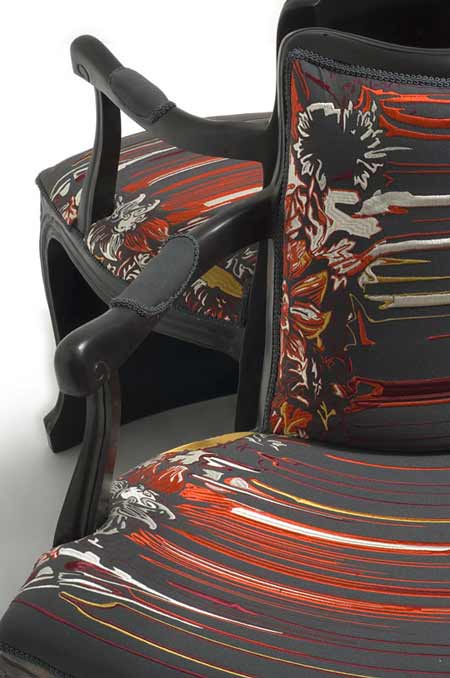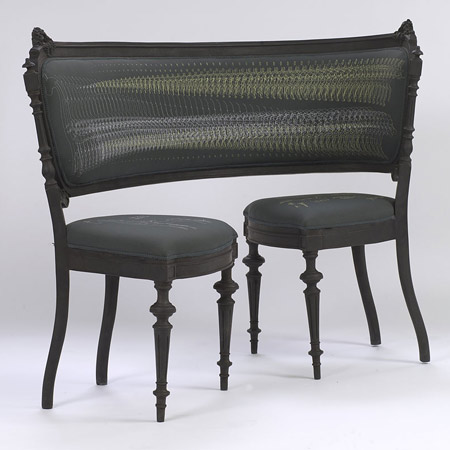
Lathe by Sebastian Brajkovic
An exhibition of new work by designer Sebastian Brajkovic opens at the Carpenters Workshop Gallery in London today.
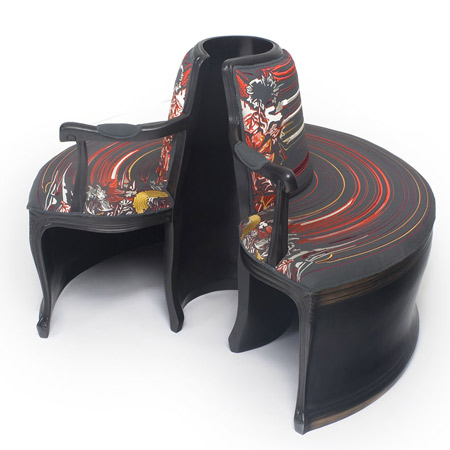
Called Lathe, the collection comprises furniture pieces that appear to have been stretched or extruded.
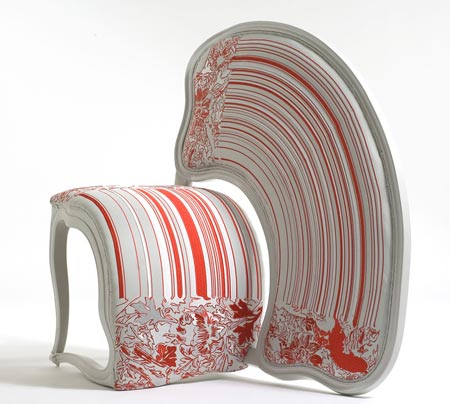
"This extruding idea came from a Photoshop function where you can pick a row of pixels and extend them as long as you want," explains Brajkovic.
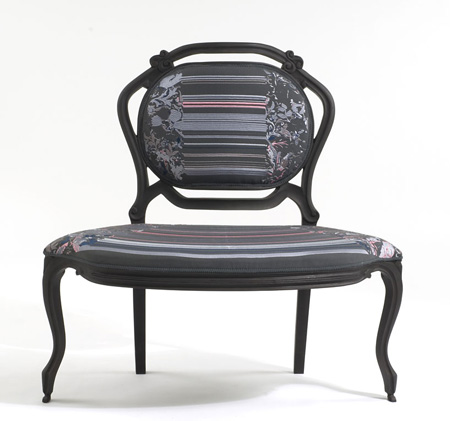
Here's some more information from Carpenters Workshop Gallery:
--
SEBASTIAN BRAJKOVIC
5 February - 14 March 2009
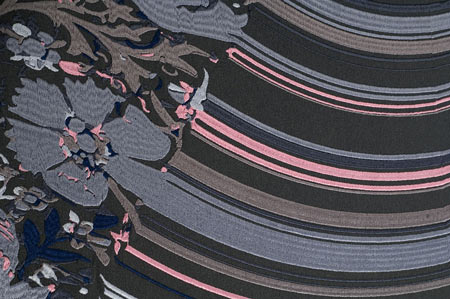
Carpenters Workshop Gallery is pleased to present Sebastian Brajkovic’s highly anticipated new body of work, entitled Lathe. Brajkovic’s work strikes a fascinating balance between the old and the new.
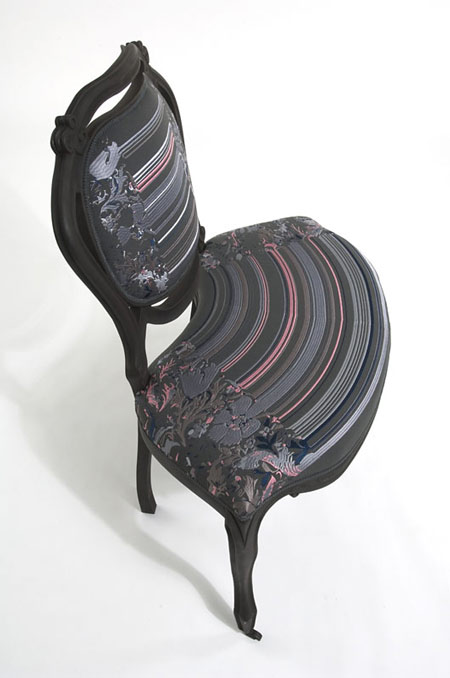
His work is both highly contemporary, using computer technology to form composition, yet ingrained in history with its exquisite craftsmanship and traditional techniques.
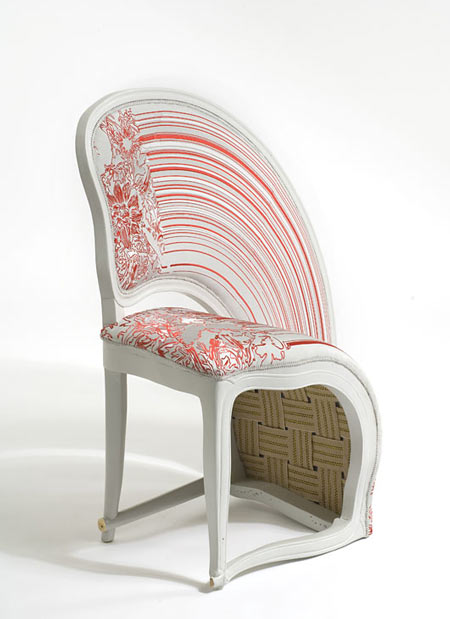
His artistic process starts by deconstructing historical pieces of furniture, in particular seventeenth-century chairs, then through a combination of wood carving, bronze casting and hand embroidering, he reconstructs an entirely new vision.
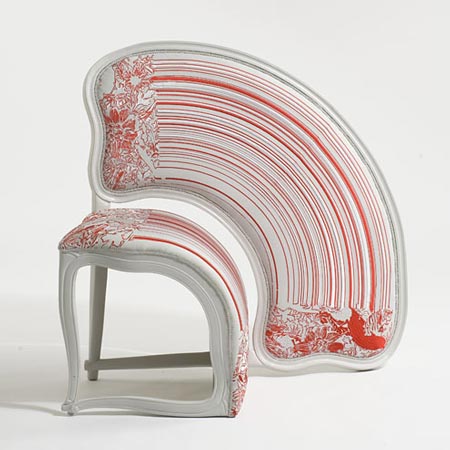
His functional artworks are both a tribute to the past and a prelude to the future. In the Lathe works, Brajkovic plays with his ’sitters’ subconscious comfort of the familiar, by taking traditional forms and techniques and subverting them with contemporary attitude.
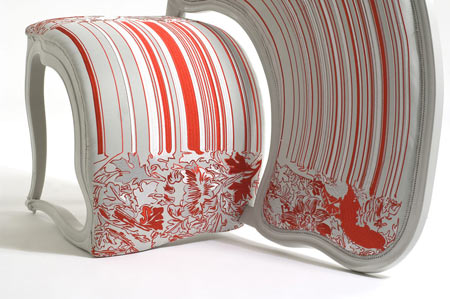
‘They are called ‘Lathe’ because of the apparent rotating effect of the design. In fact the word Lathe comes from the Latin word used to convey the idea of milk being stirred. My very first thought with making this design was actually a practical one. I wanted to create more space on a singular chair by “extruding” the seat’s surface area. This extruding idea came from a Photoshop function where you can pick a row of pixels and extend them as long as you want. This modern computer method aided me to devise new ways of sketching as a contradictory partner in my design process. In this paradoxical sense, using antique forms was the next logical step.’
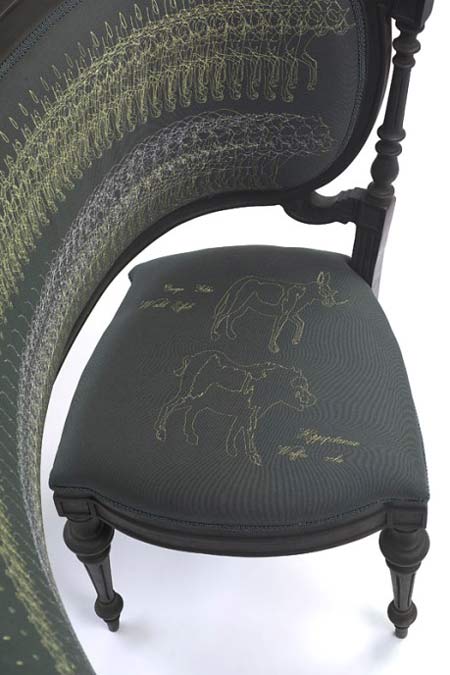
Brajkovic uses form and composition like an artist; the spinning composition he uses is comparable to the similarly computer-distortion inspired Vortex Paintings by contemporary artist David Salle, but the form is more likable to seventeenth-century furniture makers, bronze foundry artisans and traditional embroiderers. Thus is the parody of Brajkovic's work, it tells a story of contemporary society’s need to reference the past, but present it in an idiosyncratically contemporary way. He is drawn to the aesthetics of the past as a way of retaining our memories, but reveres the new, with its unknown and curious future.
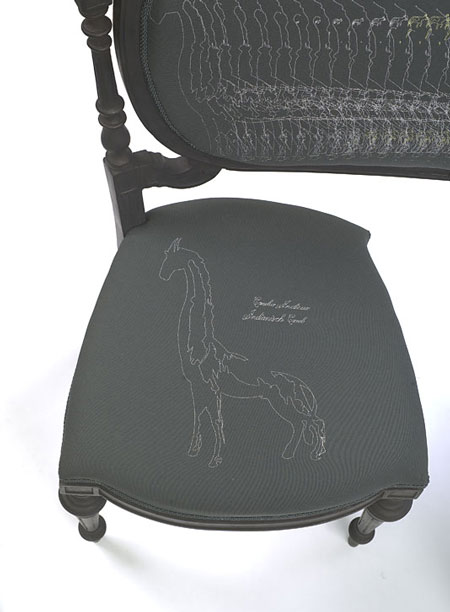
Exhibition Highlights
Lathe I, Bronze, embroidered upholstery, Edition of 8.
In Lathe I Brajkovic twists the familiar seventeenth-century dining chair and conjures up a playful alter reality, where objects themselves can be physically stretched and pulled as if in digital programme. The Lathe I has been pierced by a central axis running through the profile of the chair back, and as though being turned on a giant lathe, the seat and back extend around offering up a new, more spacious seating arrangement. With the seat extruded, the arms of the chair look like they might meet in reverse, the whole piece existing in the negative space of a traditional chair.
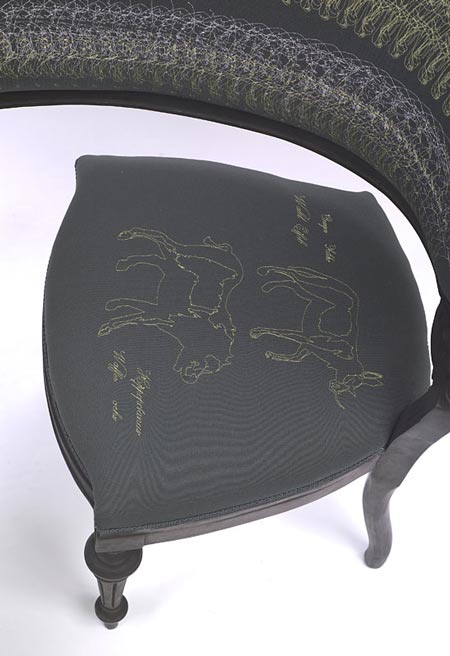
Lathe VIII, Bronze, embroidered upholstery, Edition of 8.
Lathe VIII reworks the traditional concept of a loveseat. Two antique chairs have been corrupted, fused together with the vision of modern technology, remade in traditional techniques, and now presenting an entirely new perspective on the conventional loveseat.
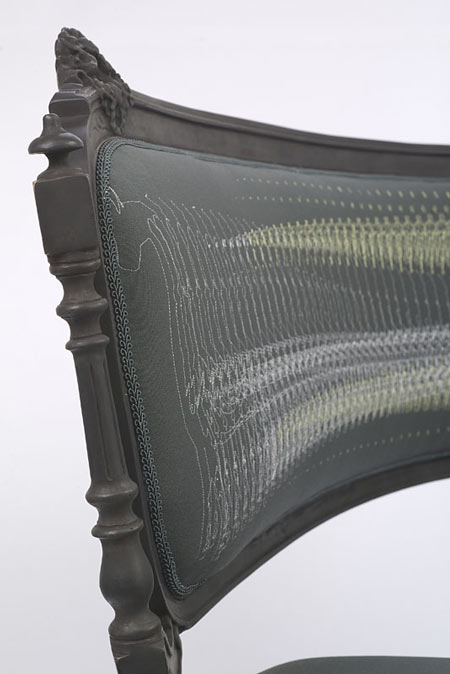
There is dynamism in this work, the chairs apparently turn around, pirouette, then spin off and trick the eye by giving the impression of a shift of movement or change of direction.
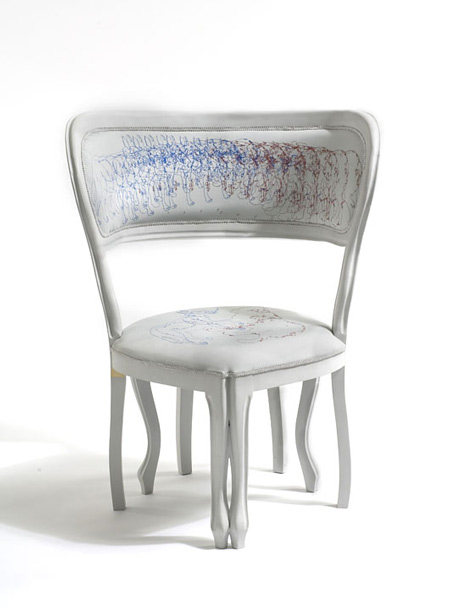
Like a sequence from The Matrix where the camera rotates around a scene that is frozen-in-time, when taking in the form a certain stillness pervades as you mentally navigate the distorted, alter-reality shape.
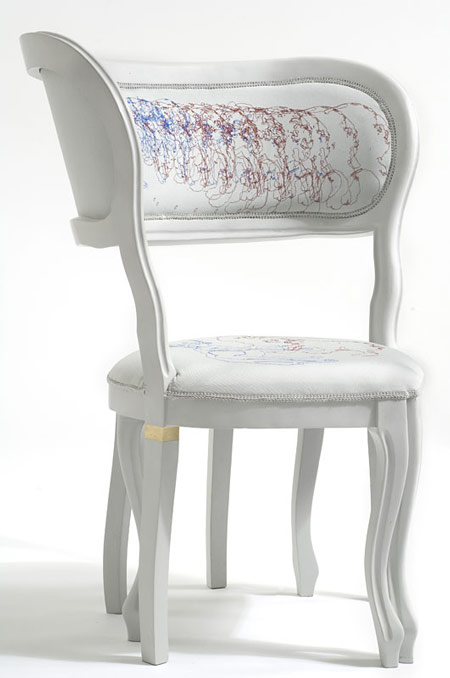
In 2008 the Lathe VIII won critics pick of the Design Art London Fair, and was acquired by the Victoria & Albert Museum for their permanent collection with sponsorship from Moet Hennesy. It will also feature in the Telling Tales exhibition curated by Gareth Williams opening in June 2009, which will focus on work by designers who explore the narrative potential of objects, connecting the past with the present.
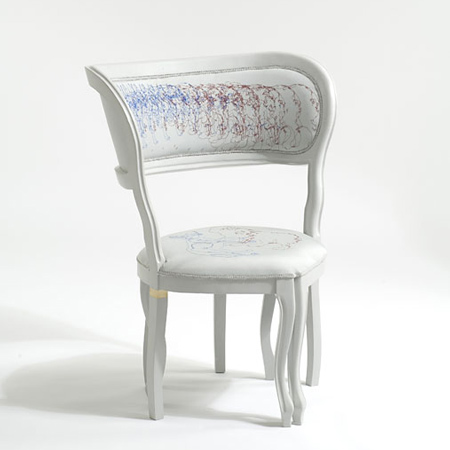
Lathe Table, Aluminium, Edition of 8.
Made of aluminium, the Lathe Table is quite literally created by being turned on a real lathe. In this incarnation however, the chisel carves aluminum directly instead of the traditional wood.
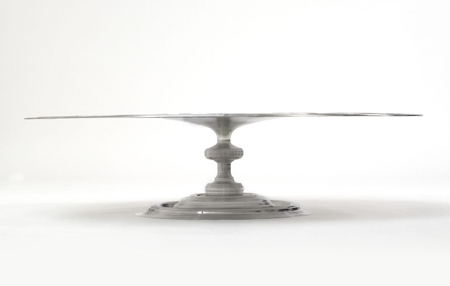
The evocative sense of movement is conveyed in the spinning lines of the quasi vortex, offering the past impression of a moment of great movement and now stillness. Inspired originally by a child’s spinning top, whizzing around at high speed, it has the same illusion that once at its optimal speed it is no longer moving but standing up straight.
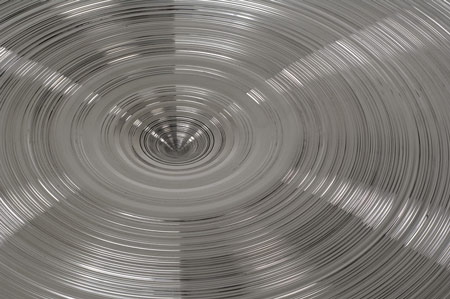
The highly polished surface is a product of the lathe turning technique which polishes as it carves the metal. He explains that whereas the Lathe Chairs are more like painting, in that modifications can be made during the production process, the Lathe Table is a one step process which is an honest and direct application of the Lathe concept.
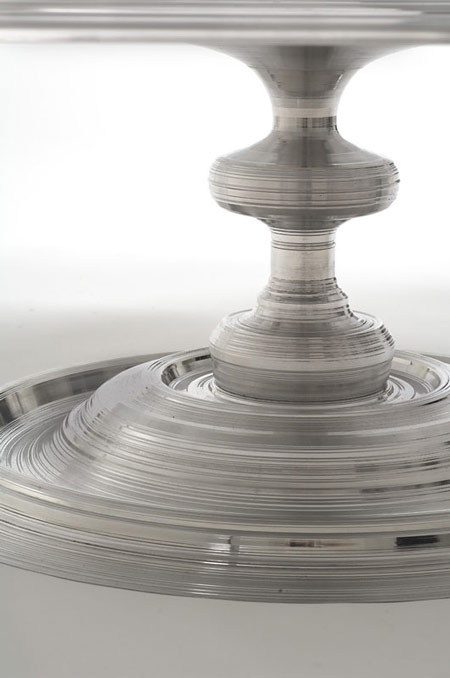
Lathe V, Bronze, embroidered upholstery, Edition of 8.
In this work, modern techniques collide with classical shapes and an artisan use of materials. The turning of the lathe is evident this time through the central axis of the seat, the rotation highlighted further with the pulled extended lines of the embroidery - almost comically -like movement in a cartoon sketch.
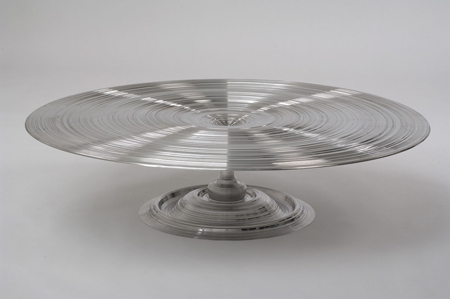
Again in a turn of wit, Brajkovic offers a view of the underside of the seat even though the viewer is standing up straight. He bends perspective like a painter might, but in a three-dimensional way.
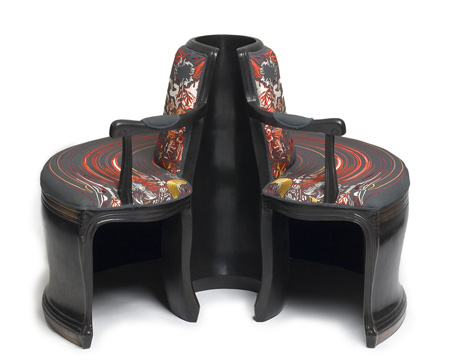
Born in 1975, his mother is Dutch-Indonesian and his father Croatian-Italian. He graduated from the esteemed Eindhoeven Design Academy in 2006, where he could work within the fields of art and design simultaneously without categorization. He studied under Gijs Bakker, Hella Jongerius and Jurgen Bey, carrying out an invaluable apprenticeship at the Juergen Bey Studio. He continues to study philosophy at the University of Utrecht and lives and works in Amsterdam.
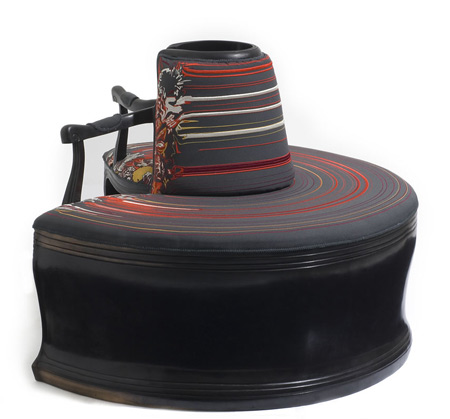
Sebastian Brajkovic exhibited at DesignArt London 2008, Design Miami/ Basel 2008 and Rossana Orlandi, Milan in 2007.
